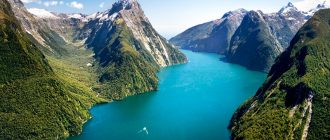Brescia (Italy) – the most detailed information about the city with photos. The main attractions of Brescia with a description, guides and cards.
Contents
City Brescia (Italy)
Brescia is a city in northern Italy in the Lombardy region. Located between Milan and Lake Garda, being the capital of the same name provinces. Brescia is a magnificent historic city that can call one of the pearls of northern Italy. Convenient location in This time played a cruel joke. Brescia is often in the shadow of Milan, Venice, Verona and Bergamo. At the same time the city boasts wonderful Renaissance architecture, Roman artifacts and magnificent museums. In addition, currently Brescia – one of the richest cities in Italy, as well as a large industrial center of lombardy.
- Geography and climate
- Practical information
- Story
- How to get there
- sights
- Video
- Maps and guides
- Comments and reviews
Geography and climate
Brescia is located in the northwestern part of the Po Valley in 100 km east of Milan. The city is located in the foothills of the Alps on the river The harz. Brescia has a subtropical climate with hot summers and in the cool winter.
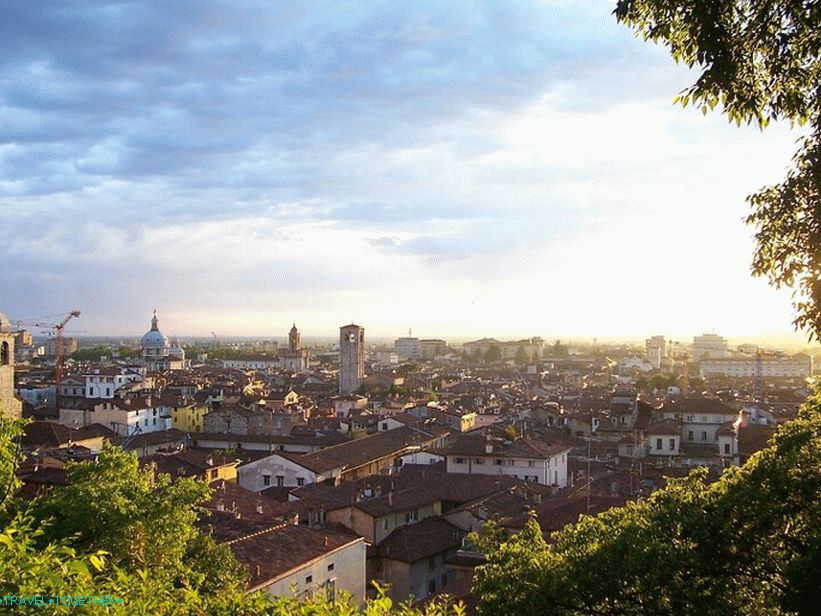 Panorama of the city
Panorama of the city
Practical information
- The population is 196 thousand people.
- The area is 90.34 km2.
- The language is Italian.
- Currency – Euro.
- Visa – Schengen.
- Time – Central European (UTC +1, summer +2).
- The historic city center has an active shopping area with numerous clothing and jewelry stores. The best A place to shop is the area from Portici to Piazza Square della loggia.
- Brescia has a delightful gastronomy, in which stand out: casoncelli (homemade beef tortellini with butter, sprinkled with Parmesan with sage), winter polenta and grilled pork. Also the city is famous for its excellent pizzerias.
Story
Brescia has an ancient, more than three thousand year history, sources which go to the pre-Roman era. In ancient times, the city was the capital of the ancient Gallic tribe of tsenomans. Was later colonized by the Roman Empire. In the 5th century, Brescia was destroyed by the Huns and restored by the Ostrogoths. From 6th to 10th century city consistently belonged to the Lombards and the Franks.
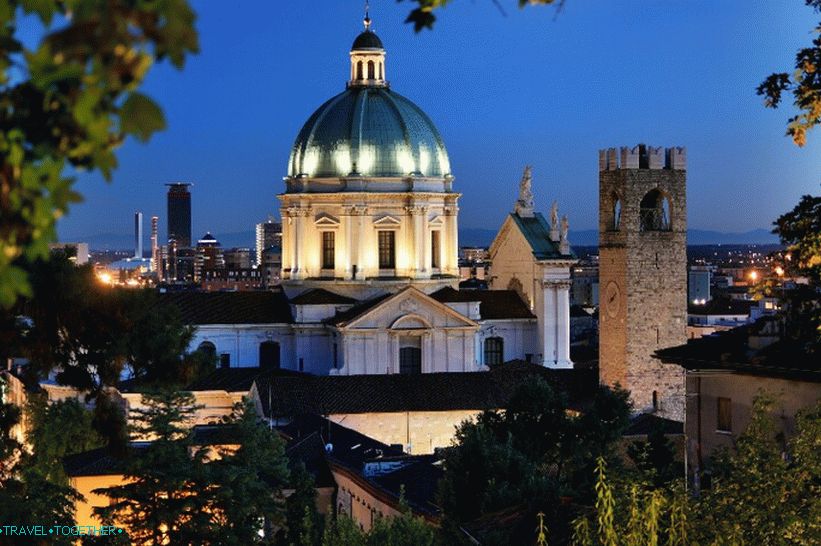 Panorama of Brescia
Panorama of Brescia
In the 10th and 12th centuries, Brescia moved from German emperors to local noblemen, until, ultimately, not gained independence. In 1311 the city was conquered by the Holy Roman Empire. Although after a few decades became part of the possession of the Visconti, and A century later, Brescia became part of the Republic of Venice, in composition which was before her fall. Then the city was part of the empire of the Austrian Habsburgs, then the possessions of the House of Savoy, until in 1859 became part of the Italian kingdom
How to get there
Brescia has a small airport, which is located 20 km from the city. The larger airport is located 50 km away in Bergamo. It is also easily accessible by train, bus or car from Rome, Florence, Venice, Milan, Verona.
sights
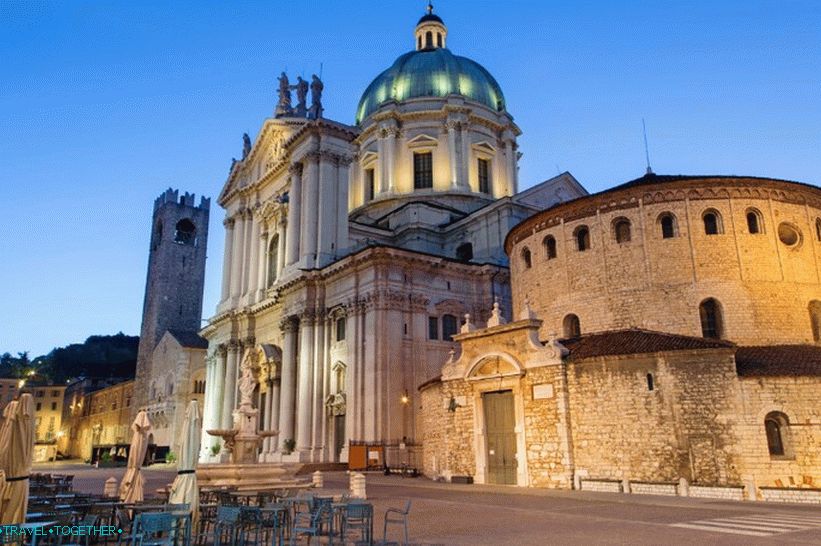 Piazza Duomo
Piazza Duomo
Piazza Duomo is a magnificent historic square that is the heart of brescia. This urban space is surrounded old buildings with cozy street cafes.
There are three iconic sights here:
- The new cathedral is a beautiful 17th century baroque and rococo church with a massive central dome added in 1825.
- The old cathedral is an ancient Romanesque rotunda that dates from 11-12 centuries. Under the cathedral is a crypt, built in 9-11 centuries as part of an even more ancient basilica.
- Broletto is an old medieval town hall of the 12th century with a square Poncahali Tower, added 100 years later.
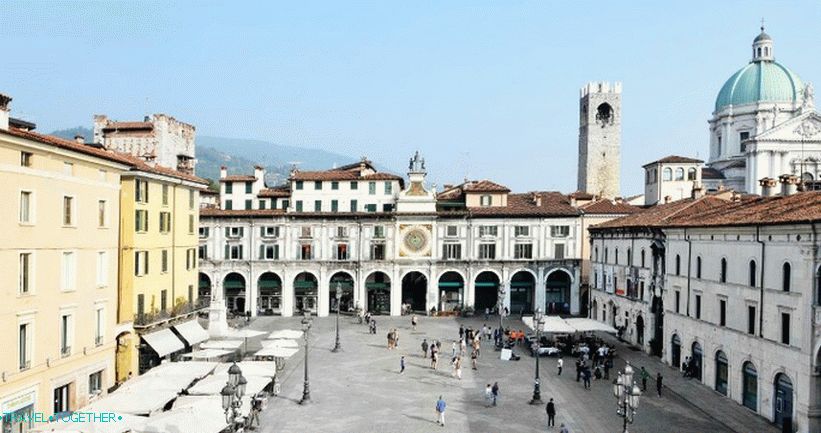 Piazza della Loggia
Piazza della Loggia
Piazza della Loggia is one of the most picturesque squares in northern Italy with beautiful Venetian architecture. Graceful The loggia (town hall) in its western part was launched in the style of the early renaissance in 1492 and completed only in the second half 17 century. On the contrary, over a long colonnade, a giant clock is set. 1581 years.
 Roman forum
Roman forum
The Roman Forum (Piazza del Foro) is a small square that is one of the oldest places in Brescia. It is public and the political center of the ancient city, surrounded by ancient buildings and roman ruins. The most interesting Roman building here is the Capitolino temple, built in the 1st century AD during the period reign of Vespasian. Only six have survived to our time. Corinthian columns with original white marble details. AT The temple has three cellae (cameras), where you can see original altars and floors of colored marble. Also on the square you can see the remains of the roman theater of the 3rd century and the roman eastern gateway
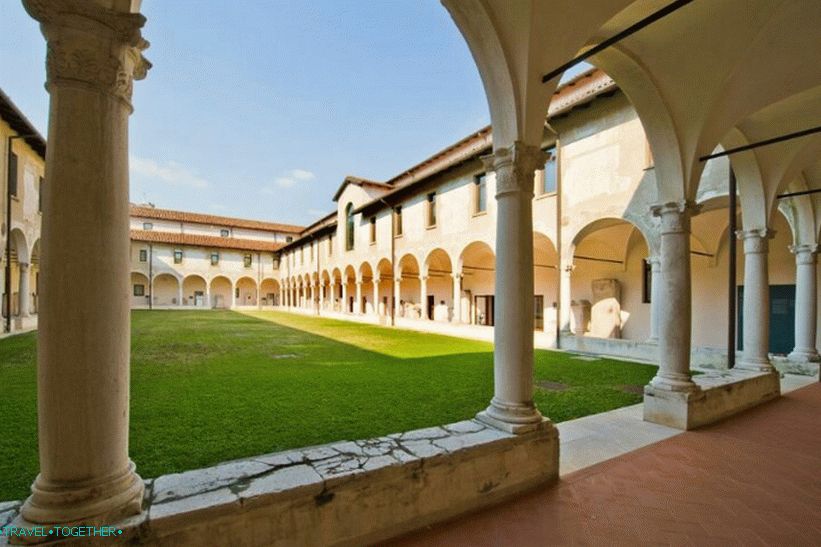 San salvatore
San salvatore
San Salvatore (or Santa Giulia) – a former monastery founded in the 6th century by the Langobards. Is a UNESCO World Heritage Site. and includes roman ruins as well as significant Post-Romanesque, Romanesque and Renaissance buildings. Now in the walls The monastery houses the museum, which is one of the most interesting cultural sites in Lombardy.

Castello – a medieval castle of the 13th century, which towers over historical center of Brescia. This is the fortress of a powerful family. Visconti, reinforced in the Venetian period. Now here is located Arms Museum and Risorgimento Museum (movement for independence).
The castle is definitely worth the climb to enjoy the beautiful overlooking Brescia.
 Santa maria della Carita
Santa maria della Carita
Santa Maria della Carita – a beautiful 17th century church in style Baroque with a wonderful interior decorated with frescoes.
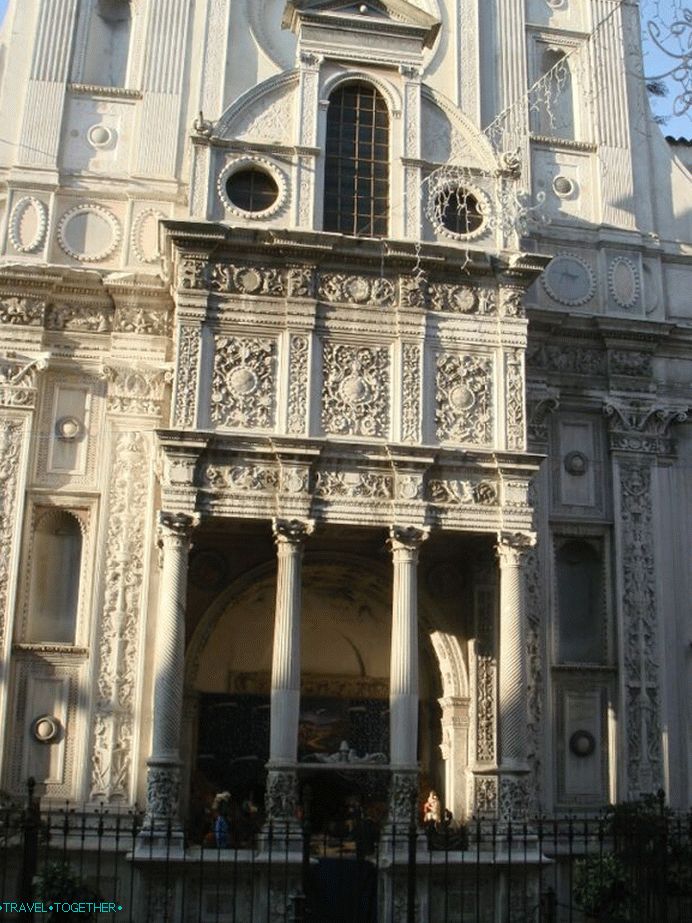 Santa Maria dei Miracoli
Santa Maria dei Miracoli
Santa Maria dei Miracoli is an elegant little church, founded in the 15th century. It has an interesting facade of the early era Renaissance, covered with intricately carved marble reliefs 15th century.
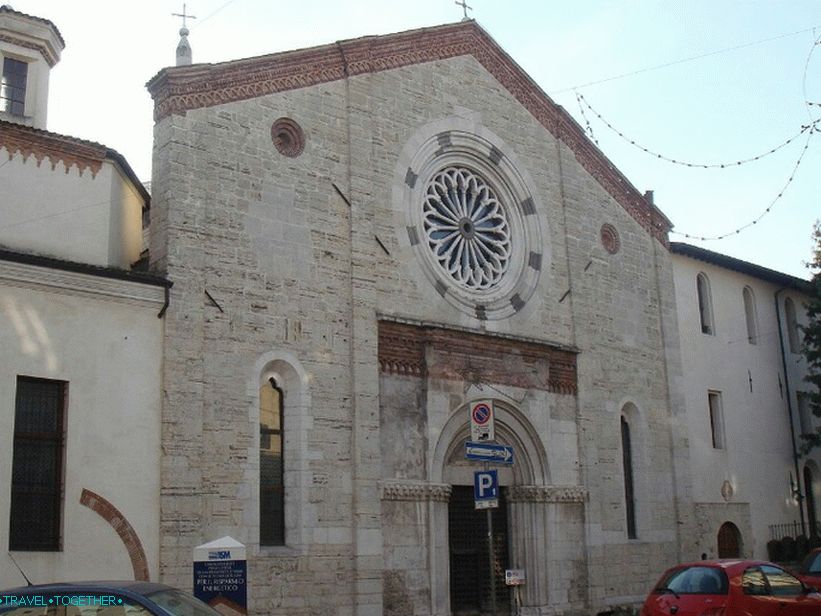
Church of San Francesco – an ancient religious building, built in the 13th century that combines the features of the Romanesque style and gothic. The church is surrounded by an ancient Franciscan monastery, dating back to the 14th century.
Video
Maps and guides
Tourist map Large map of the entire city





